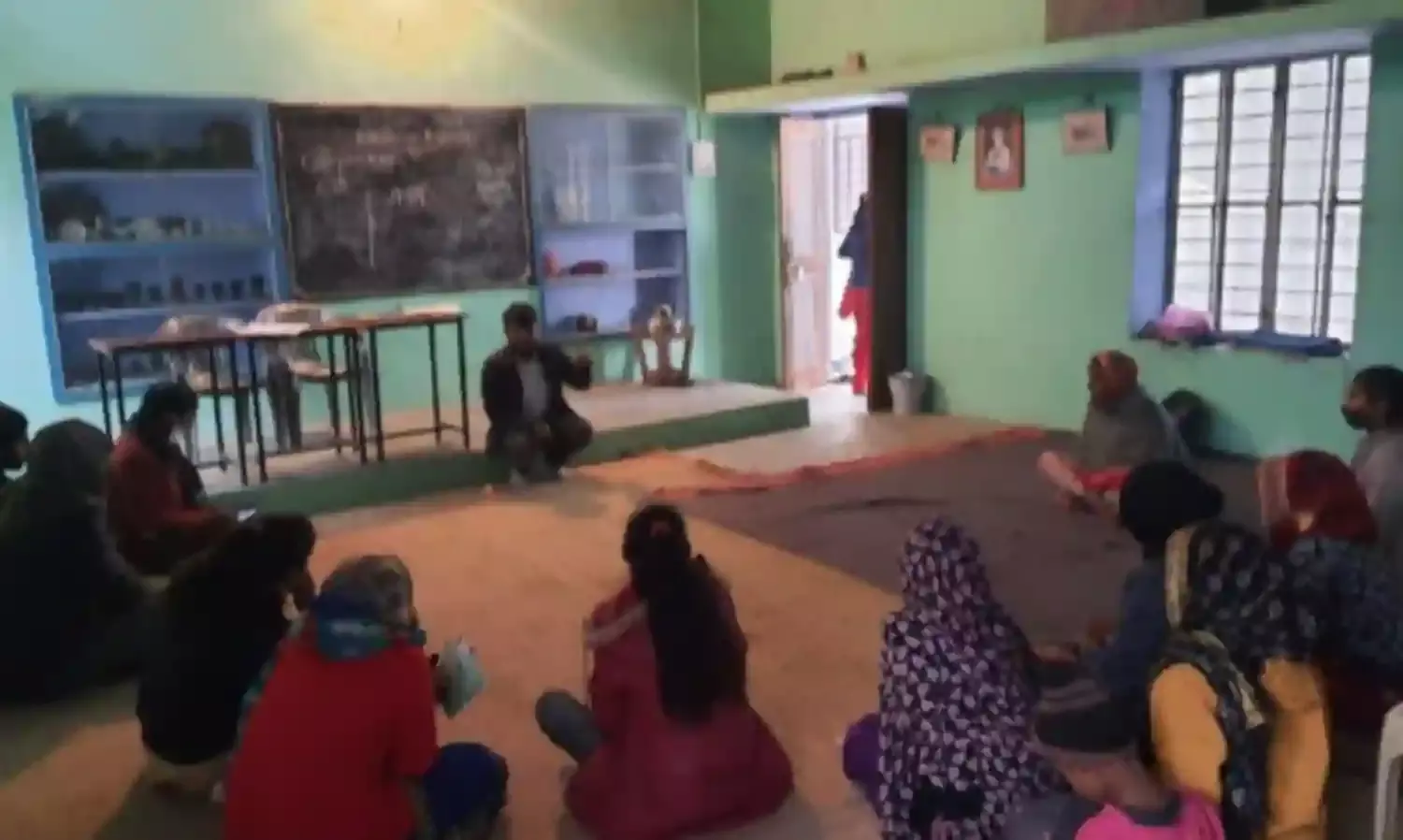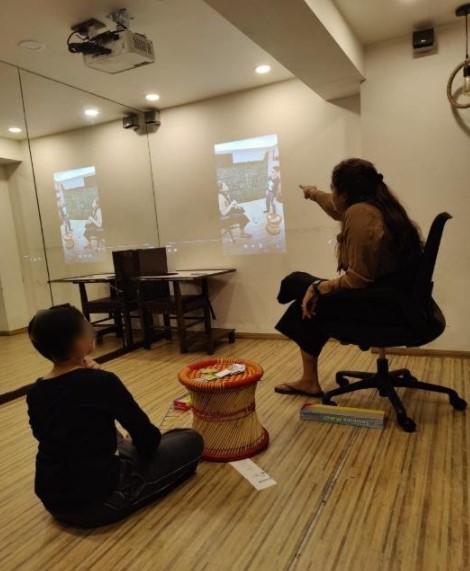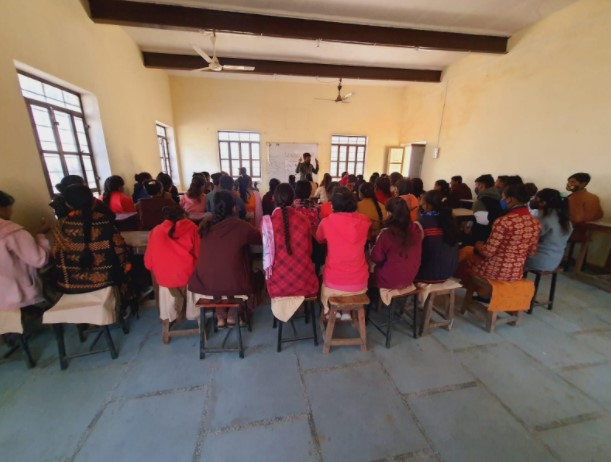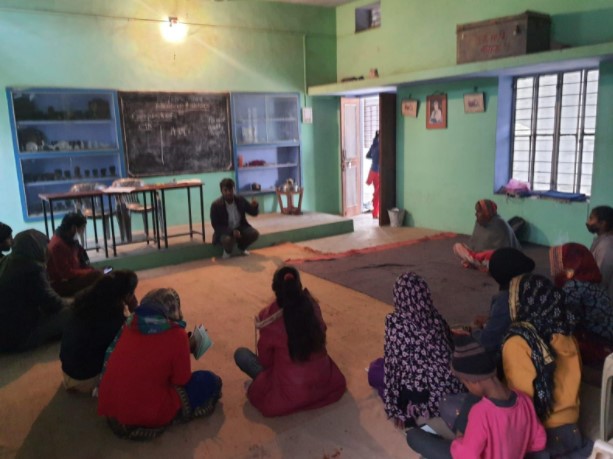Virtually Deprived: 'Online Learning in India is a Sham'
'They take our attendance and dismiss us'

KOLKATA: Joining many other states, the West Bengal government recently announced the imposition of another partial lockdown till January 15. Schools and colleges in the state, which reopened in November for the first time since the pandemic was allowed to run rampage, have been fully closed once again.
“It’s unfortunate that the educational institutions have taken 20 months to open. This effort of reopening institutions should have been made immediately after the second wave. After all, the new surge has not started from educational institutions,” said Sayoni Choudhuri Patra, assistant professor at Loreto College, University of Calcutta.
Open for less than 2 months, schools and colleges have been closed down again whereas other, more immediately profitable activities stand only partly curbed.
The locking down of schools due to a mismanaged pandemic and the subsequent system of online education has stripped many young Indians of their access to in-person education.
Hardest hit are the students whose parents are not rich, and children with disabilities.
A survey conducted in the first pandemic year by Swabhiman, a cross-disability organisation, showed a 43% increase in the likelihood of students with special needs being forced to leave school.
Urmi Roy, an East Kolkata resident with bipolar disorder, teaches and studies at a special school. She says it’s upsetting that schools have been closed again, adding that “Teaching has increased my own enthusiasm towards learning. I want to learn more.”
Roy’s mother too expresses concern for her daughter, who requires medication for her diagnosis. “My daughter will get extremely bored and restless at home and that worries me,” she confides.
And asks, “If restaurants and cinema halls had reopened, why not schools?”
Home confinement is especially difficult for some. Mansi Sanghvi Bhayani, a special educator who runs a mind wellness studio called Marga, describes their efforts to overcome the difficulty.
“It is particularly difficult for special students to remain confined in their homes. That is why we have focused on forming a homeschooling curriculum through an online medium where we have divided the child’s timetable and curriculum into four to five periods. There, in between academic periods, we have sandwiched a lot of physical education and co-curricular activities.”
“By taking reference from their schools and parents, we have used Zoom and YouTube and all of that by creating curriculum based videos, PPTs, usage of whiteboard and online quizzes in a very focused manner. Through these we’ve created different evaluation methods. And we’ve also been activity based, so that has allowed them to develop trust,” says Bhayani.

The forced shift from in-person to virtual learning has also intensified the class apartheid in India, where dependable internet access still remains a luxury.
Trisha Sarkar, a student at the Ultadanga Government SPHS School for Girls who lives in Kolkata’s Bagmari area, says she loves to study, but the online classes aren’t helping her at all.
“I prefer going to school because I get to meet my friends, engage in activities like dance and scouts, and talk to my teachers about my progress properly,” the 12 year old explains. “But in online classes, the teachers aren’t very responsive - they take our attendance and dismiss us. Later they just send us a recording of the class on WhatsApp.”
“Studying on WhatsApp doesn’t work,” adds her mother Lily Sarkar, a single mother who works as a domestic help in the neighbouring areas.
Sarkar couldn’t afford a smartphone in the pandemic’s initial months. “The neighbour kid who had a phone would take notes during class and Trisha would go to her house and study. This wasn’t as per covid norms but we had no other option.”
“I want my daughter to study, so I took out a loan and bought a smartphone. I’ve taken up work at a few extra houses to pay off the loan every month,” she tells The Citizen.
India’s elected governments spend only about 3% of GDP on education, with an increasing share being diverted to extend debt to students to attend expensive private institutions.
And with reliable internet access restricted to the wealthy, the London NGO Save the Children recently estimated that 320 million Indian students are being deprived of an education.
The state of online education in rural India is especially concerning.
According to Saad Alam Khan, who works in Rajasthan’s Jhunjhunu district imparting social, emotional and ethical learning in schools:
“Low income families have smartphones here in Jhunjhunu, however online learning hasn’t been very successful. There is a lack of supervision from the guardian – whether their child is at all accessing online learning or not – mostly because they’re involved in daily labour work or similar occupations.”
Khan adds that public schools in Jhunjhunu aren’t compensating their teachers for mobile data. “All the teachers have access to smartphones, and decent internet connectivity. Yet they expect the school to give them a computer with an internet connection. They were not willing to use their own data connection.”
Classes aren’t being held regularly as a result. “Despite the documentation showing that online classes were held, they weren’t held consistently, and the matter was never discussed in any of the Gram Panchayats.”

Involved in work with 14 schools in the district, Khan says he has seen some very rare cases of teachers taking the initiative to improve online learning. “If the teacher has a spare smartphone, he or she would give it to their students for them to be able to attend online classes.”
According to government figures, Rajasthan ranks at 23 of 34 states and UTs on GDP per capita, with an NSDP per person on a par with Senegal.
In India overall, the GSMA mobile gender gap report found in 2020 that only 21% of Indian women use the internet, compared with 42% of their male counterparts.
Khan confirms the misogynist social stigma around women accessing the internet in the district where he works. “Households that could afford a smartphone were reluctant to give it to female students until they’re married.”
The patriarchal control of women’s time also plays a significant role. In 2020 the National Sample Survey found that women and girls aged six and up spend an average of 5 hours a day performing unpaid domestic services in India, while men and boys spend just an hour and a half.
In Jhunjhunu, “In my experience, female students are more responsive to education but they’re being kept busy doing household chores for 8-12 hours everyday, thus, they fail to find the time to attend online classes,” says Khan.
He emphasises that formal schooling is not enough. “I’ve seen that in a household, even if the female student knows how to fill the MGNREGA form, the male student is permitted to do it. So, we cannot have Digital India or online education if we can’t de-gender technological access.”
Meanwhile, back in Kolkata, paid teachers say they are unable to properly evaluate their students’ progress in the virtual mode. A recent survey conducted by the Azim Premji University found that 90% of teachers were unable to do so.
Sayoni Patra of Loreto College confirms this. “Meaningful assessment is possible if the participation from the end of students is regular and sincere. But the teachers cannot monitor thoroughly whether students are working on suggestions for improvement.”
As schools remain closed, is online learning possible at all, given these graphic divides?
“Online learning in India is a sham,” says Suchintan Das, a Rhodes scholar from the city.
He fears the digital divide has become unbridgeable. “More damage will be done to their lives and careers by this undemocratic and mindless closure of educational institutions en masse than by the pandemic itself. It is really a very sad state of affairs.”
Das concludes, “The government is not managing the pandemic, but the perception of how they are dealing with the pandemic. As long as the ruling party does not come under fire, the government is least bothered by the repercussions of sustained closure of schools and colleges.”
As the lockdown proceeds in West Bengal, all offices, local trains, restaurants, shopping malls and cinemas continue to operate, at half capacity.
Cover photo: Saad Alam Khan



